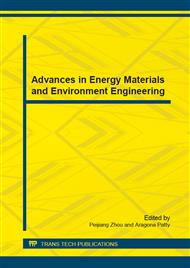p.197
p.205
p.211
p.216
p.220
p.225
p.230
p.235
p.239
Analysis of the Characteristics of Low NOx Combustion Using Exhaust Gas Recirculation
Abstract:
NOx damages to the environment. It also endangers human body health. It has become a major air pollutant. Only the nitric oxide emissions could be reduced by the improvement of combustion. The economical and reasonable technical measures, which is through selecting rational parameters and combustion process, could decrease the formation of NOx in fuel combustion phase. According to the national bureau of statistics data released, the national NOx emissions will reach 29.14 million ~ 42.96 million t in 2030,what is more ,China will surpass the United States to be the world's largest NOx emissions country. Environmental pollution has become one of the main factors restricting the development of economy in China [1].
Info:
Periodical:
Pages:
220-224
Citation:
Online since:
December 2014
Authors:
Price:
Сopyright:
© 2015 Trans Tech Publications Ltd. All Rights Reserved
Share:
Citation:


